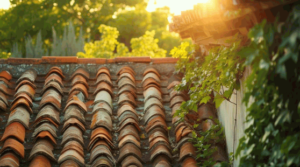Venetian plaster is a luxurious and elegant wall finish that has been used for centuries to create stunning, marble-like surfaces. But what exactly is Venetian plaster, and why is it so expensive?
In this article, we will explore how Venetian plaster is made, the ingredients used, and the factors that contribute to its high cost. We will also discuss the benefits of using Venetian plaster, as well as some alternative options.
We will provide tips on how to care for and maintain Venetian plaster to ensure its longevity and beauty. So let’s dive in and uncover the secrets behind the allure of Venetian plaster.
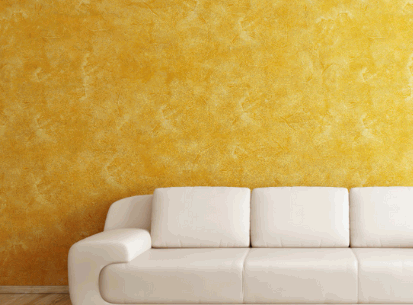
What Is Venetian Plaster?
Venetian plaster is a luxurious decorative finish applied to surfaces, known for its artistic sheen and decorative appeal.
It is often characterized by its smooth, marble-like texture that can add depth and elegance to any room. The application of Venetian plaster involves layering plaster with a specialized spatula and burnishing it to create a polished finish that glistens in the light. This technique allows for a range of finishes, from matte to glossy, depending on the desired effect. The artistry of Venetian plaster lies in the subtle variations and imperfections that give each surface a unique and handmade quality, enhancing the overall aesthetic of the space.
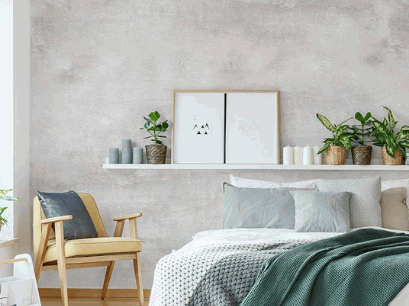
How Is Venetian Plaster Made?
Venetian plaster is handcrafted by skilled artisans employing a specialized technique that involves a meticulous process of layering and finishing.
This age-old craft requires a profound understanding of mineral-based materials and the application of these mixtures in a precise manner. The artisans carefully prepare slaked lime and marble dust, mixing them to create a smooth blend that is then skilfully applied to walls or ceilings using a trowel.
Each layer must be expertly smoothed and polished to achieve the signature marble-like texture and depth that Venetian plaster is renowned for. This process demands patience, attention to detail, and a true mastery of the craft from start to finish.
What Are The Ingredients Used In Venetian Plaster?
The ingredients used in Venetian plaster include high-grade materials carefully selected for their authenticity and artisanal quality.
These essential elements typically consist of slaked lime, marble dust, and specific types of high-quality pigments. The slaked lime acts as the binder, providing durability and a smooth finish, while the marble dust lends a lustrous sheen and depth to the plaster. The high-quality pigments infuse the plaster with rich, nuanced colors that add a luxurious touch to any surface.
The plastering process involves meticulously layering the mixture onto the walls in thin coats, followed by skilled burnishing to achieve a polished, marble-like appearance. This meticulous craftsmanship and dedication to using authentic, premium ingredients are what sets Venetian plaster apart as a true artisanal masterpiece.
What Makes Venetian Plaster Expensive?
Venetian plaster is considered expensive due to the high cost of materials, skilled labor, and the unique value it adds to spaces as a long-term investment.
The luxurious appeal of Venetian plaster lies in its exquisite finish, which is achieved through a meticulous process involving multiple layers of fine materials like marble dust and lime putty. This intricate technique demands skilled artisans who have mastered the art of applying and polishing the plaster to create a smooth, glossy surface that exudes elegance and sophistication. The investment value of Venetian plaster is evident in its durability and timeless beauty, making it a sought-after choice for those looking to elevate the aesthetic appeal of their interiors.
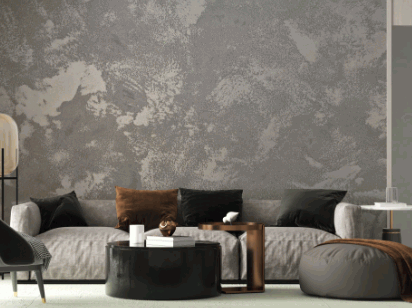
Quality Of Materials
The quality of materials used in Venetian plaster contributes to its durability, high-end aesthetic, and rich finish, setting it apart as a premium choice for sophisticated spaces.
Using high-quality materials in Venetian plaster is essential as it not only enhances the richness of the surface but also ensures longevity and a luxurious appeal. The premium materials create a smooth and lustrous finish that exudes elegance and sophistication.
The durability of these materials means that the Venetian plaster will maintain its luxurious appearance for years to come, making it a worthwhile investment for those seeking a high-end aesthetic. The richness and depth of the finish achieved with top-quality materials add a touch of opulence to any space, elevating its overall ambiance.
Skilled Labour And Time-Consuming Process
The application of Venetian plaster requires skilled labor and meticulous attention to detail, making it a time-consuming process that demands precision and perfection.
Crafting Venetian plaster involves a series of intricate steps that only trained artisans can execute flawlessly. These skilled individuals possess a deep understanding of the materials and techniques required to achieve the desired polished finish.
Each layer of plaster must be applied with expertise, ensuring a smooth and seamless result. The meticulous process of burnishing and polishing further showcases the dedication to achieving a flawless surface. Skilled labor is essential in navigating the nuances of the plaster application, guaranteeing a high-quality and visually stunning outcome.
Customization Options
Venetian plaster offers extensive customization options, allowing for bespoke finishes that reflect individual preferences and artistic touches, resulting in exquisite and unique surfaces.
The beauty of Venetian plaster lies in its versatility when it comes to creating personalized designs. From subtle textures to bold patterns, the possibilities for artistic expression are endless with this ancient technique. By incorporating various pigments and application methods, each surface can be transformed into a one-of-a-kind masterpiece. The uniqueness of customized Venetian plaster finishes adds a touch of luxury and sophistication to any space, making it a popular choice for those seeking to elevate their interiors with a touch of elegance.
Uniqueness And Authenticity
The uniqueness and authenticity of Venetian plaster lie in its hand-applied nature, ensuring each surface carries a distinctive touch of craftsmanship and authenticity.
This bespoke application method involves skilled artisans carefully layering natural materials to create a finish that is truly one-of-a-kind. What sets Venetian plaster apart is the individual attention each surface receives, resulting in a custom design that exudes a sense of artistry and luxury. The handcrafted process ensures that no two walls are identical, adding character and charm to any space. It is this personal touch that makes Venetian plaster a popular choice for those seeking a unique and timeless aesthetic for their interiors.
Durability And Longevity
Venetian plaster is prized for its durability and longevity, offering timeless elegance that requires minimal maintenance to retain its pristine appearance over the years.
The appeal of Venetian plaster lies in its ability to withstand the test of time, making it a popular choice for those seeking a long-lasting finish that exudes sophistication. Its unique composition and application process result in a surface that not only looks beautiful but also stands up well to wear and tear. This characteristic allows Venetian plaster to maintain its luxurious aesthetic without requiring frequent touch-ups or repairs, ultimately saving homeowners both time and money in the long run.
Whether used in a modern or traditional setting, Venetian plaster adds a touch of class and sophistication that never goes out of style.
What Are The Benefits of Using Venetian Plaster?
Using Venetian plaster offers a range of benefits including enhanced elegance, sophistication, and a prestigious aesthetic that elevates the ambiance of any space.
The luxurious appeal of Venetian plaster lies in its unparalleled ability to create a seamless and lustrous finish that exudes opulence. The craftsmanship involved in applying this traditional technique adds a unique touch of artistry to the walls, making them a focal point of sophistication.
The prestige associated with Venetian plaster comes from its rich history dating back to the Renaissance era, where it was a symbol of wealth and status. Integrating this exquisite material into interior design transforms ordinary walls into pieces of art, enhancing the overall atmosphere with a timeless yet contemporary allure.
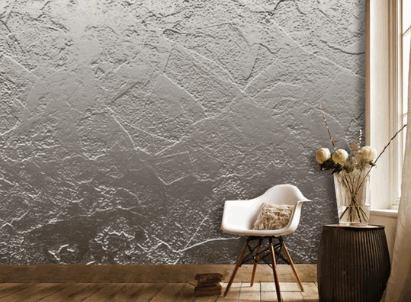
What Are The Alternatives To Venetian Plaster?
Whilst Venetian plaster is luxurious, there are alternatives such as faux finishes, textured paint, and wallpaper that offer similar decorative effects at a lower cost.
Faux finishes, for example, can mimic the look of Venetian plaster by using specialized techniques such as color washing or sponging.
Textured paint, on the other hand, adds depth and visual interest to walls through the application of different textures like sand, stone, or metallic finishes.
Wallpaper comes in various styles, from traditional to modern, offering a wide range of design possibilities at a fraction of the cost of Venetian plaster. These alternatives not only provide cost-effectiveness but also versatility in achieving unique decorative aesthetics.
Faux Venetian Plaster
Faux Venetian plaster provides a cost-effective alternative to the authentic material, offering a similar aesthetic value without the high price tag.
The beauty of faux finishes lies in their ability to mimic the luxurious appearance of real Venetian plaster while being much more budget-friendly. This faux technique not only saves costs on material but also on installation, as it can be applied more quickly and easily than traditional plaster. The versatile nature of faux Venetian plaster allows for customization in color and texture, providing endless design possibilities at a fraction of the cost. Homeowners and designers alike can achieve the sophisticated look they desire without breaking the bank.
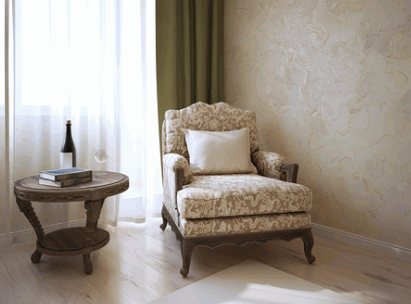
Lime Wash
Limewash is a traditional alternative to Venetian plaster, known for its unique finish and timeless appeal in interior design.
It offers a classic, elegant touch to walls and surfaces, creating a soft, matte appearance that exudes a sense of depth and warmth. The application of lime wash results in a breathable finish, allowing walls to absorb and release moisture naturally. This characteristic makes it particularly suitable for enhancing the aesthetic of historic and older properties, blending seamlessly with traditional architectural features.
Its versatility shines, complementing a wide range of design styles, from rustic farmhouses to contemporary chic interiors, adding an element of texture and character to any space.
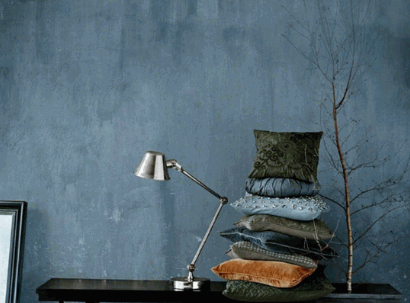
Textured Paint
Textured paint offers a versatile alternative to Venetian plaster, allowing for customized surfaces with an artisanal touch at a fraction of the cost.
Its unique blend of textures and finishes, ranging from smooth to rugged, provides a wide range of design possibilities for both residential and commercial spaces. Homeowners and designers can achieve the look and feel of traditional plaster without the extensive labor and expense typically associated with it.
Textured paint can be easily tinted to match any color scheme, giving individuals the freedom to express their creativity and personalize their living or working environments.
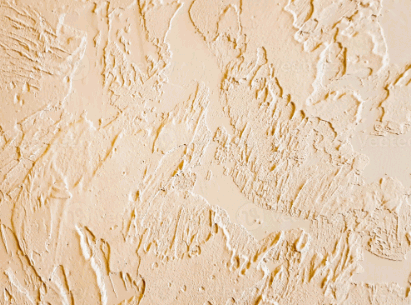
Wallpaper
Wallpaper presents a convenient alternative to Venetian plaster, offering a wide range of patterns and designs to enhance the visual appeal of interior spaces.
With wallpaper, homeowners have the freedom to choose from various options such as geometric prints, floral motifs, textured finishes, and even custom designs to suit their personal style. The versatility of wallpaper allows for easy customization and quick application, transforming a room into a vibrant and unique space without the extensive labor and drying time associated with Venetian plaster. The cost-effectiveness of wallpaper makes it a practical choice for those looking to achieve a luxurious aesthetic on a budget.
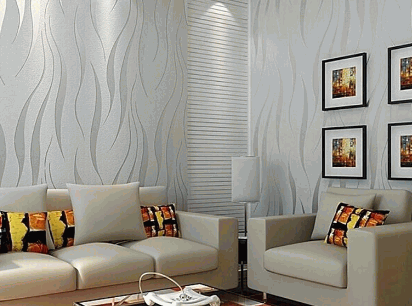
How To Care For Venetian Plaster?
Caring for Venetian plaster involves regular cleaning, protection from moisture, and timely touch-ups to maintain its pristine appearance and durability over time.
- Regular dusting or vacuuming with a soft brush attachment can help prevent dirt buildup on the surface of Venetian plaster.
- Using a damp cloth with mild soap can effectively clean any stains without damaging the finish.
To protect the plaster from moisture, ensure that any areas prone to water exposure, such as bathrooms or kitchens, are properly sealed with a high-quality sealant. Timely touch-ups play a crucial role in preserving the plaster’s longevity; small cracks or blemishes should be repaired promptly to prevent further damage and maintain the overall integrity of the surface.
Regular Cleaning And Maintenance
Regular cleaning and maintenance are essential for preserving the pristine appearance of Venetian plaster, ensuring its longevity and beauty over time.
To keep your Venetian plaster looking its best, start by dusting the surface regularly with a soft, dry cloth to remove any loose dirt or debris.
For deeper cleaning, use a gentle soap solution and a soft sponge to gently wipe down the surface, being careful not to scrub too hard and damage the plaster. Avoid using harsh cleaning chemicals or abrasive materials that can cause discoloration or scratches.
It’s important to inspect the plaster periodically for any cracks or damage and promptly repair them to prevent further deterioration.
Protecting From Moisture And Humidity
Protecting Venetian plaster from moisture and humidity is crucial to maintaining its integrity and longevity, preventing damage, and preserving its aesthetic appeal.
Exposure to moisture can lead to discoloration, warping, and even mold growth on Venetian plaster surfaces. To safeguard this delicate material, it is essential to apply a high-quality sealant that forms a protective barrier against water infiltration. Controlling indoor humidity levels through proper ventilation and using dehumidifiers can help prevent moisture from seeping into the plaster.
Regular dusting and gentle cleaning with a damp cloth are recommended maintenance practices to keep Venetian plaster looking pristine and extend its lifespan.
Touching Up And Repairing Small Damages
Timely touch-ups and repairs are necessary for addressing small damages on Venetian plaster surfaces, ensuring seamless restoration and preserving the overall aesthetic quality.
When it comes to keeping your Venetian plaster looking flawless, quick intervention plays a crucial role in preventing further deterioration. By promptly addressing any cracks, chips, or imperfections, you can avoid more extensive damage that may require costly repairs down the line. Utilizing appropriate touch-up techniques tailored to the specific type of damage is key. Whether it’s a minor surface scratch or a larger area that needs patching, proper application methods and matching the texture are essential for achieving a consistent finish. Regular maintenance also helps in prolonging the lifespan of your Venetian plaster, keeping it looking impeccable for years to come.
Explore further: What Does Asbestos In Plaster Look Like

